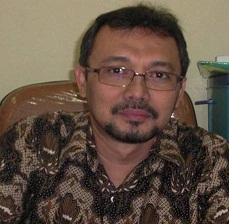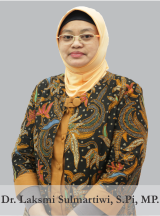Innovative Utilization of Blood Cockle Shell Waste (Anadara granosa) as a Growth Medium for Nitzschia sp.
Downloads
Shellfish are a fishery commodity in Indonesia with increasing production annually, including a projected 137 thousand tons in 2024. Among the various types of shellfish, blood cockle is one of the most popular among citizens. Only 11-16% of their body is consumable, while the majority of it consists of shells that end up as waste. This waste is generally processed into crafts or animal feed. Blood cockle shell waste contains nitrogen (N) and phosphorus (P), which are necessary for higher and lower plants. This study was conducted to explore the potential of blood cockle shell waste as a growth medium for the microalgae Nitzschia sp. Reduction of the N and P ratio in this study was carried out to increase cell density by limiting nutrients of Nitzschia sp. There were five treatments with four replications in this study: P1 as a positive control (f/2 medium; N/P 8:1), P2 (cockle shell fertilizer medium/CSF; N/P 1,3:1), P3 (CSF+NaNO3; N/P 0,1:1), P4 (CSF+NaNO3; N/P 0,121:1), and P5 (CSF+NaNO3; N/P ratio 0,144:1). The results showed a significant difference (p<0.05) in the population of Nitzschia sp. in P3 with the highest density of 862.500 cells/ml and average daily growth of 275.000 cells/day. Based on this, the lowest N/P ratio limitation showed the best growth in Nitzschia sp. The low ratio indicates the prevention of toxicity in the culture medium. N limitation in this study also showed optimization of N utilization in the metabolic process of Nitzschia sp. N limitation is a strategy to increase the accumulation of nutrients in some microalgae, including Nitzschia sp., as observed in this study.
Agusnia, H., Fatmawati, K. & Suhandana, M. (2021). Efek penambahan ekstrak rumput laut Eucheuma cottonii pada pembuatan es batu terhadap kemunduran mutu kerang lokan (Geloina erosa) dan kerang darah (Anadara granosa). Marinade, 4(1):51-62.
Antara. (2020). KKP dorong pemanfaatan kerang sebagai komoditas berdaya saing tinggi. https://www.antaranews.com/berita/1772609/kkp-dorong-pemanfaatan-kerang-sebagai-komoditas-berdaya-saing-tinggi. Diakses pada 17 Agustus 2024.
Bronk, D. A., See, J. H., Bradley, P., & Killberg, L. (2007). DON as a source of bioavailable nitrogen for phytoplankton. Biogeosciences, 4:283-296.
Cai, T., Park, S. Y., & Li, Y. (2013). Nutrient recovery from waste water streams by microalgae: Status and prospects. Renewable and Sustainable Energy Reviews, 19:360-369.
Collos, Y. & Berges, J. (2002). Nitrogen metabolism in phytoplankton. EOLSS Publishers (UNESCO). pp. 1-18.
Costa, S. S., Miranda, A. L., Andrade, B. B., Assis, D. D., Souza, C. O., Morais, M. G., Costa, J. A., & Druzian, J. I. (2018). Influence of nitrogen on growth, biomass composition, production, and properties of polyhydroxyalkanoates (PHAs) by microalgae. International Journal of Biological Macromolecules, 116:552-562.
Fazrina, F., & Yursilla, W. (2019) Pemanfatan limbah cangkang kerang darah (Anadara granosa) sebagai pupuk organik terhadap pertumbuhan tanaman sawi (Brassica juncea). JESBIO: Jurnal Edukasi dan Sains Biologi, 8(2).
Feng, D., Chen, Z., Xue, S., & Zhang, W. (2011). Increased lipid production of the marine oleaginous microalgae Isochrysis zhangjiangensis (Chrysophyta) by nitrogen supplement. Bioresource Technology, 102(12):6710-6716.
Hamka, E., Nono, D. R., Rizki, W., Tamanyira, M. M., Mustofa, A., Habibi, A. (2015). Perikanan kerang. Panduan penangkapan dan penanganan. Edisi 1. WWF-Indonesia.
Handayani, V. P., Ayujuwita, F., Qamary, F. A. (2024). NPK-GRANOSA: Pemanfaatan limbah cangkang kerang darah (Anadara granosa) sebagai pupuk organik tanaman sawih (Brassica juncea). PKM Kewirausahaan. Surabaya: Universitas Muhammadiyah Surabaya. 16 hal.
Inthe, M. G., Rusli, A., Rahmaniar. (2023). Perubahan komposisi gizi kerang darah (Anadara granosa) karena proses perebusan. Jurnal Fish Protech, 6(1):25-30.
Kurniasih, D., Rahmat, M. B., Handoko, C. R., & Zuhri, A. (2017). Pembuatan pakan ternak dari limbah cangkang kerang di Desa Bulak Kenjeran Surabaya. Seminar MASTER, 159-163.
Ladyba, T. (2017). Pengaruh pemberian pupuk N dan P dengan rasio N/P yang berbeda terhadap pertumbuhan dan kandungan protein Chlorella sp. Tesis. Malang: Program Studi Teknologi Bioproses. Fakultas Teknologi Pertanian Universitas Brawijaya.
Lai, Y. C., Karam, A. L., Sederoff, H. W., Ducoste, J. J., & Reyes, F. L. (2019). Relating nitrogen concentration and light intensity to the growth and lipid accumulation of Dunaliella viridis in a photobioreactor. Journal of Applied Phycology, 31:3397-3409. https://doi.org/10.1007/s10811-019-01897-4.
Latuconsina, H. (2019). Ekologi perairan tropis: Prinsip dasar pengelolaan sumber daya hayati perairan. Yogyakarta: Gajah Mada University Press.
Martinez, A. G., Calderon, K., & Lopez, J. G. (2016). New concepts of microbial treatment processes for the nitrogen removal: effect of protein and amino acids degradation. Amino Acids, 48:1123-1130.
Paes, C. R. P. S., Faria, G. R., Tinoco, N. A. B., Castro, D. J. F. A., Barbarino, E., & Lourenço, S. O. (2016). Growth, nutrient uptake and chemical composition of Chlorella sp. and Nannochloropsis oculata under nitrogen starvation. Latin American Journal of Aquatic Research, 44(2):275-292.
Prihardianto, M. K., Chilmawati, D., & Subandiyono. (2023). Pola pertumbuhan Thalassiosira sp. pada media Walne dengan rasio N/P berbeda. Jurnal Sains Akuakultur Tropis, 2:196-206.
Qian, W., Yang, Y., Chou, S., Ge, S., Li, P., Wang, X., Zhuang, L-L., & Zhang, J. (2024). Effect of N/P ratio on attached microalgae growth and the differentiated metabolism along the depth of biofilm. Environmental Research, 240(2):117428. https://doi.org/10.1016/j.envres.2023.117428.
Rovira, L., Trobajo, R., Sato, S., Ibanez, C., & Mann, D. G. (2015). Genetic and physiological diversity in the diatom Nitzschia inconspicua. Journal of Eukaryotic Microbiology, 62(6):815-832.
Safitri, N. (2022). Analisis kandungan protein dalam mikroalgae Nitzschia sp. dari hutan mangrove Lampung Timur. Skripsi. Bandar Lampung: Fakultas Matematika dan Ilmu Pengetahuan Alam Universitas Lampung.
Torstensson, A., Jimenez, C., Nilsson, A. K., & Wulff, A. (2019). Elevated temperature and decreased salinity both affect the biochemical composition of The Antarctic Sea-Ice diatom Nitzschia lecointei, but not increased CO2. Polar Biology, 42:2149-2164.
Umami, A. & Suprijanto, J. (2013, Agustus). Pemanfaatan limbah rumput laut dan cangkang kerang sebagai pupuk organik cair. Seminar Nasional Tahunan X Hasil Penelitian Kelautan dan Perikanan UGM, 1-7.
Villaró, S., Sánchez-Zurano, A., Ciardi, M., Alarcón, F. J., Clagnan, E., Adani, F., Morillas-España, A., Álvarez, C., & Lafarga, T. (2022). Production of microalgae using pilot-scale thin-layer cascade photobioreactor: Effect of water type on biomass composition. Biomass and Bioenergy, 163(106534).
Xia, B., Chen, B., Sun, X., Qu, K., Ma, F., & Du, M. (2015). Interaction of TiO2 nanoparticles with the marine microalga Nitzschia closterium: Growth inhibition, oxidative stress, and internalization. Science of the Total Environment, 508:525-533.
Copyright (c) 2024 Journal of Marine and Coastal Science

This work is licensed under a Creative Commons Attribution-NonCommercial-ShareAlike 4.0 International License.













